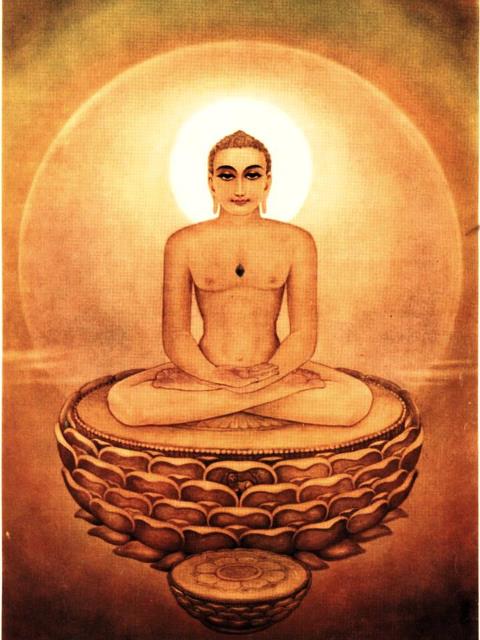
Jainism believes in beginningless and endless existence of the Universe
By Vimal Shah, Mumbai
Jainism is one of the ancient religions widely practiced in the Indian subcontinent in the past. In present times there are millions of Jains (practitioners of Jainism) in India and a large number of them have migrated to almost every part of the world retaining their faith, culture and the identity. Jains are a miniscule minority not only in the world but also in India.
Their last Tirthankar Bhagwan Mahavir is a historical figure and ample evidences of his times are available. He was born in 599 BCE and attained Nirvan or Moksh in 527 BCE at the age of 72. Gautam Buddha (563 BCE – 486 BCE) was a contemporary of Bhagwan Mahavir. Bhagwan Mahavir was born on the 13th day of the Shukla Paksh of the Chaitra month according to the Jain Panchang (Calendar). The day generally falls in March or April every year and this year it’s on 25th April 2021.
While the purpose of this article is to discuss the major life events of Bhagwan Mahavir, they cannot be well understood without knowing certain beliefs of the Jain Philosophy. Hence very limited aspects of certain concepts of the Jain Philosophy would also be discussed.
God – Siddha and Tirthankar
Some of the world Philosophies believe in a Single God – ‘The God’. Generally ‘The God’ is believed as ‘The Creator’ and ‘The Controller’ of the Universe. Some also believe in reincarnation of the God.
Jainism believes in beginning-less and endless existence of the Universe, Time, and infinite number of Souls. All the Souls are entangled in repeated cycles of birth and death as a result of their past Karma and usually bind new Karma in each birth cycle. The ultimate goal should be to shred all the Karma and get liberated from the cycle of birth and death. It is known as achieving Nirvan or Moksh or attaining the status known as “Siddha”. A few of those souls attain a special status known as “Tirthankar” by performing certain special penance amongst many other rituals, before attaining the status of Siddha. Jains revere all the liberated souls (Siddha), as their GOD with a special importance for the Tirthankars.
In this part of the Universe there are repetitive Kaal Chakra or Time Cycles, each consisting of innumerable years. Each Kaal Chakra is divided into 2 halves. During each half-cycle 24 Souls attain the status of a Tirthankar. Bhagwan Mahavir is the 24th and the last Tirthankar of current half-cycle of Kaal Chakra.
Since infinite numbers of Time Cycles have elapsed in the past and will be there in the future, there are infinite Tirthankars and Siddha of the past and will be in future as well. The unique feature of Jainism is the belief that Godliness is inherent quality of every Soul and any ordinary person can follow the right path to become a Tirthankar or Siddha and be worshipped as GOD.
Kalyanak
Jains celebrate five major events in the life of all the Tirthankars known as Panch Kalyanak. Panch means five and Kalyanak means a highly auspicious event.
- Chyavan Kalyanak (Conception) – when the Soul of a Tirthankar enters their mother’s womb
- Janma Kalyanak (Birth) – when the Tirthankar takes Birth
- Diksha Kalyanak (Renunciation) – when a Tirthankar becomes an ascetic by renouncing all the worldly possessions, family and all the relationships
- Kevalgyan Kalyanak (Omniscience) – when a Tirthankar attains Kevalgyan (complete and true knowledge)
- Nirvan/Moksh Kalyanak (Liberation) – when a Tirthankar’s soul liberates from all the Karma, leaves the body and rests in eternal peace for ever

Chayavan Kalyanak
On the preceding night of conception, mother of Bhagwan Mahavir saw 14 highly auspicious dreams signifying the soul in the womb is going to be an extraordinary personality leading a highly auspicious life. Since then the prosperity in the kingdom started growing exponentially.

Janma Kalyanak
Bhagwan Mahavir was born in a small village Kshatriyakund of Vaishali which is located in present times Bihar. He was born in a Kshatriya family to King Siddhartha and Queen Trishala who were devotees of the 23rd Tirthankar Parshwanath. He was named “Vardhaman” meaning “Growth in Prosperity” by his parents on the 12th day after his birth. He was grownup as a Prince and was awarded the name “Mahavir” meaning “Most Courageous” by a deity after testing him in his young age. His family consisted of elder brother Nandivardhan, elder sister Sudarshana, wife Yashoda, daughter Priyadarshana and son-in-law Jamali before he left for living ascetic life.
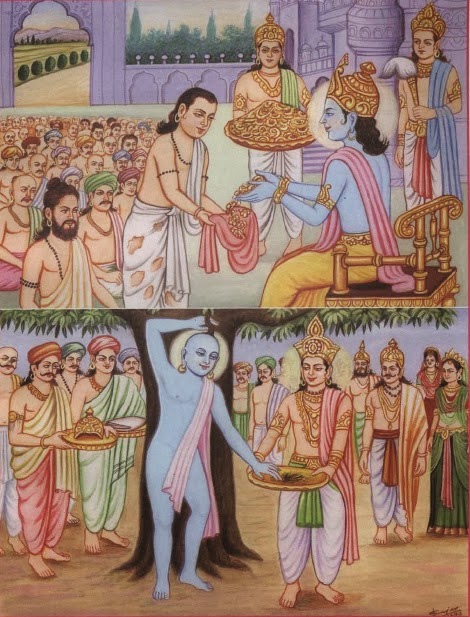
Diksha Kalyanak
After the death of his parents Bhagwan Mahavir started preparing for ascetic life and started giving “Varshidaan” (Varsh = Year and Daan = Donations). All the Tirthankars give very generous donations for one full year before beginning their ascetic life. Bhagwan Mahavir left for leading an ascetic life at the age of 30 and became a Monk. All the Tirthankars perform a Panchmushthi Loch (Panch = Five, Mushthi = Fist, Loch = Removal of hairs by pulling them with hands). Even today the Jain Monks never get their hair-cut or shaving done. They use special techniques to pluck all their hairs on the head, mustache and beards with their own hands periodically.
All the Jain Monks take Panch Mahavrat (Five Great Vows):
- Ahimsa (Non-violence) – Stay away from macro or micro level violence towards all the living beings
- Satya (Truth) – Never lie, be silent or always be truthful
- Asteya (Non-stealing) – Never steal or take anything without permission of the owner, whether worth or worthless
- Brahmacharya (Chastity) – Stay away from sensual pleasures and observe highest degree of celibacy
- Aparigraha (Non-possession) – Limiting the possessions to only absolutely essentials, permitted for Jain monks
Monks are expected to restrain themselves with respect to the above vows in following (3 X 3) 9 ways:
- (1) In their Thoughts (2) in their Speech (3) in their Action
- (1) Doing by themselves (2) Causing to be done by others (3) Approval/Appreciation when done by others
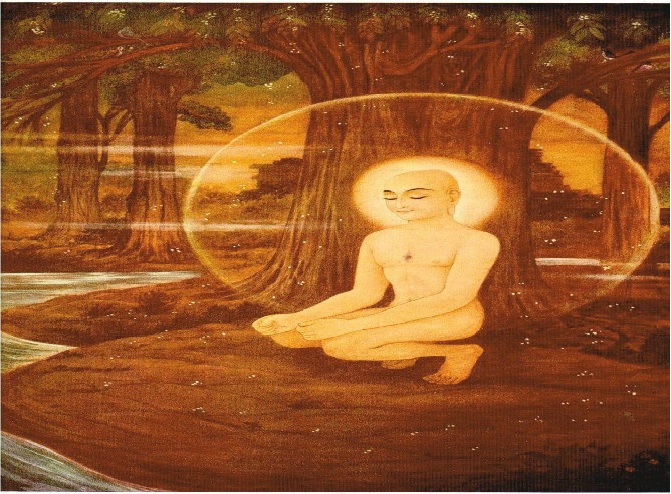
Kevalgyan Kalyanak
He spent next 12 and half years in severe fasting and meditation for shredding all his Karma in pursuit of Moksh. During these years he took up multiple and repetitive fasts without any food varying from 1 day to 6 months at a stretch with just one meal between fasts. This way he observed fast for a total of 11 years 6 months and 15 days and had one meal only on 349 days in between fasts. The kind of difficulties he faced during these 12 and a half years’ period of severe fasting and deep meditation are unimaginable and unbelievable.
Finally the day came when he attained Keval Gyan. He took up the ultimate meditation under a “Shaal” tree in a field on the north banks of river Rujuvalika in the outskirts of Jrumbhik village. That meditation resulted in shredding of 4 Ghati Karmas (explained below) and he attained Keval Gyan. Once a Tirthankar attains Keval Gyan (Omniscience) they establish a 4-fold Jain Sangh of the followers of Jainism consisting of Sadhu & Sadhvi (male & female ascetics) and Shravak & Shravika (male & female lay people). All the Tirthankars give Sermons to preach the right path to liberation for the benefit of all the followers.
Jain Philosophy categorizes all the Karma into 8 major categories:
- Four Ghati Karma (Soul related) – obscure the true nature of our Soul
- Four Aghati Karma (Body related) – determine the Physical Characteristics, Social Status, Experience of Pain & Pleasure and Lifespan.
Once the Ghati Karmas are completely shred, the Soul attains Omniscience forever and subsequently shred the Aghati Karmas and gets liberated at the end of life.
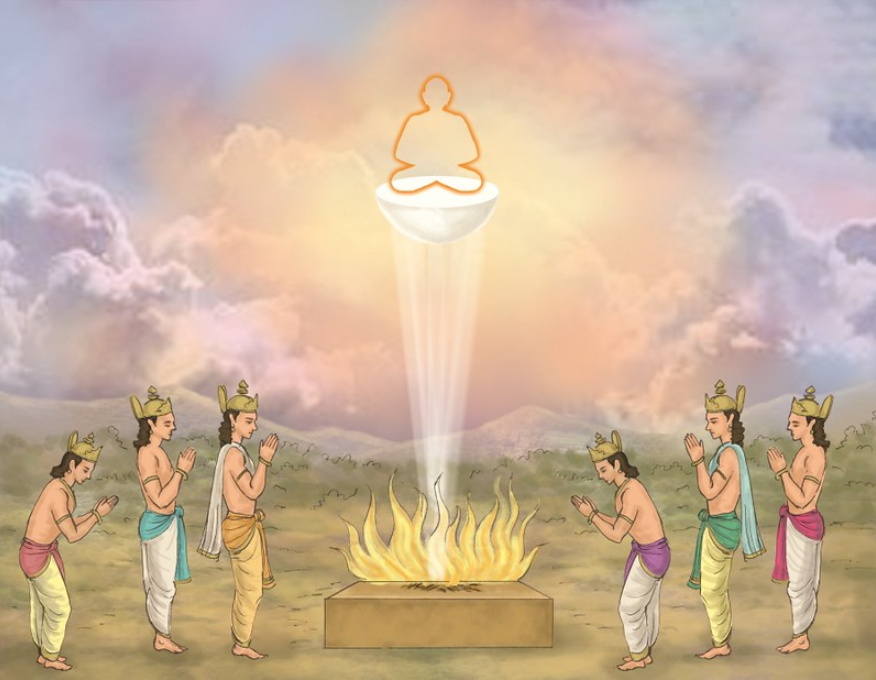
Moksh Kalyanak
Two days prior to liberation Bhagwan Mahavir took up his last fast and started giving his Last sermons which went on until his Soul departed from the body and liberated. He was in Pavapuri – in present day Bihar and the day was Amavasya (Last / No moon day) of Ashwin month which is celebrated as Deepavali or Diwali. Many Jains take up 2-days fast on the day prior and on Deepavali and perform certain rituals in respect of Moksh Kalyanak of Bhagwan Mahavir. In fact all the Jain Festivals in the entire year are best used for directly or indirectly inching towards liberation by performing fasts, penance and other such rituals. Celebrations of certain occasions might seem like enjoyment and rejoicing to an outsider, while the inherent purpose behind anything and everything is nothing but inching towards liberation.
Principles of Jainism
Amongst many others, the most important principles of Jainism preached by Bhagwan Mahavir are:
- Ahimsa (Non-violence) – Each living being has a Soul and hurting them in anyways is violence
- Anekantvaad (Non-absolutism) – truth is relative to the viewpoint from which it is known
- Aparigraha (Non-possessiveness) – non-attachment (internal and external) leads to equanimity in our lives necessary for the liberation of our soul
They all deserve a separate article on each one of them.
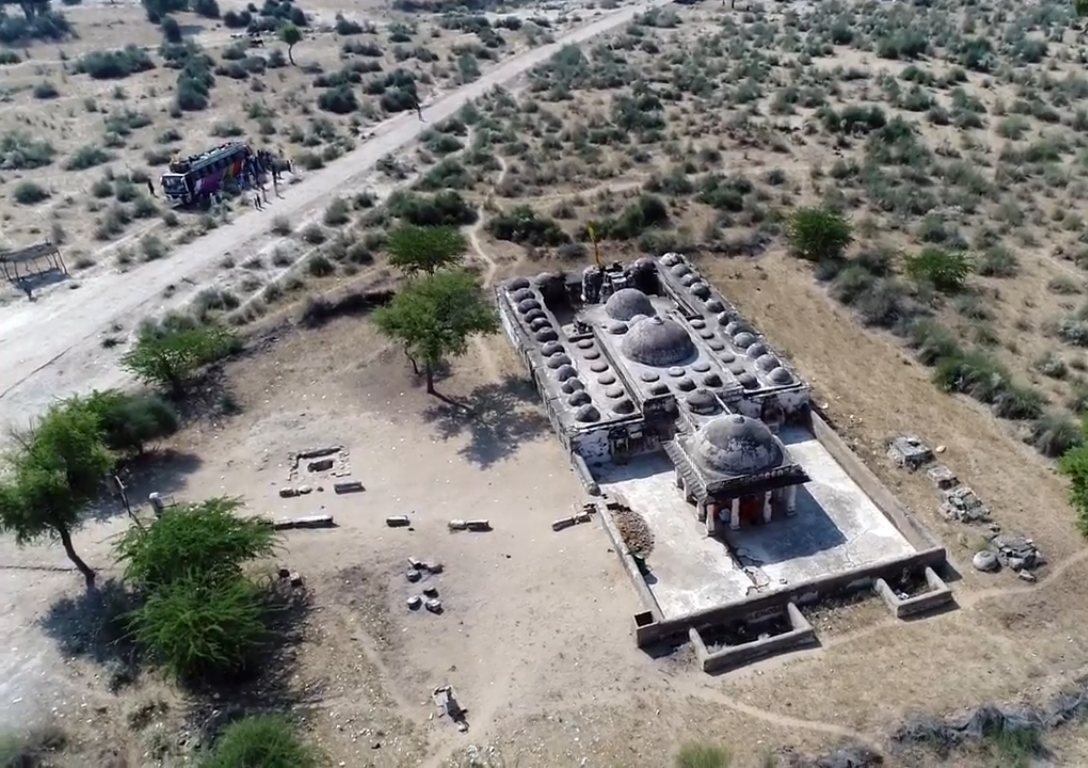
There are a large number of ancient Jain Temples in Punjab and Sindh province. Majority of the Jain community migrated to India during the partition in 1947 and the remaining families after the 1971 war. As of now there may not be any practicing Jain family in Pakistan. Nagarparkar in Tharparkar district in Sindh used to be thriving with followers of Jainism in the past. One of the most prominent temples amongst them is devoted to the 23rd Tirthankar Parshvanath, known as Gori Temple (Gori jo Mandar) built around 1375 AD located on the Islamkot Road connecting Nagarparkar and Islamkot. In India there are hundreds of temples devoted to Godiji Parshvanath (Gori and Godi are only spelling variations, and ‘ji’ is attached as a mark of respect). The image of Godiji Parshwanath installed in this temple was brought from Patan in Gujarat.
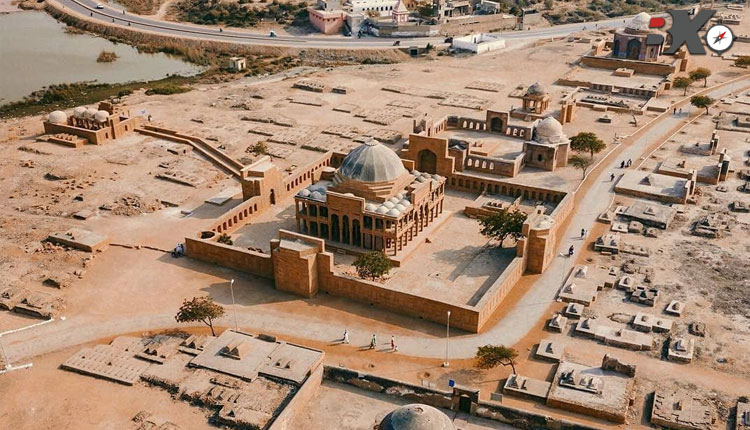
Makli (Necropolis near Thatta, Sindh, Pakistan)
An ascetic from another faith named Goshalak met Bhagwan Mahavir while he was a Monk in Nalanda near Rajgruhi in Bihar. Goshalak got impressed and started following Bhagwan Mahavir like his disciple. Goshalak was also known as “Mankhali Putra” since he was son of a Mankhali (profession of his father) and with passing times he became more popularly known as “Mankhali”. He separated from Bhagwan Mahavir after following him for about 6 years and later established a separate sect called “Aajivika” which could not survive a long time. References to Aajivika sect are available in Jain and Buddhist scriptures but not much of independent documents are available. It is believed that Makli Necropolis near Thatta in Sindh, Pakistan is named after the Mankhali (Goshalak) associated with Bhagwan Mahavir.
__________________
About the Author
